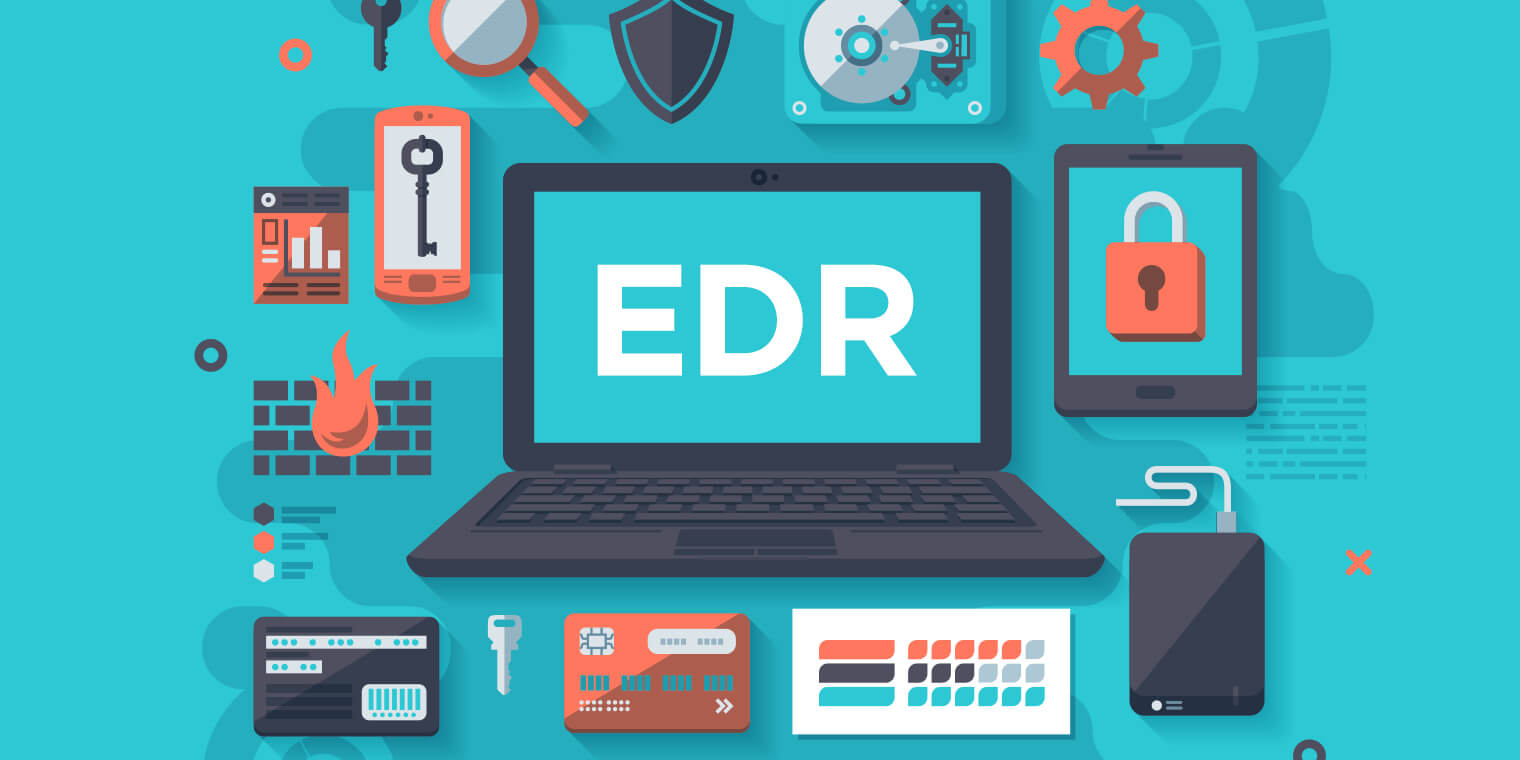EDR: Expectations Vs. Reality

Gartner’s Anton Chuvakin described the term endpoint detection and response (EDR) as the tools that assist companies in rapidly identifying, investigating, and responding to malicious cyber incidents. However, there is often a disconnect between expectations and reality regarding EDR. This is not surprising, given the ever-changing landscape of cybersecurity threats. As a result, organizations need to understand EDR capabilities to manage expectations and set realistic goals.
Typically, most of the available EDR solutions have always provided businesses with increased security telemetry to assist them in investigating and addressing cybersecurity incidents. On the other hand, numerous companies that cannot investigate cyber threats implement EDR solutions as add-ons to already deployed next-generation antivirus solutions believing that EDR will complement AV capabilities.
Unfortunately, EDR may overwhelm understaffed IT departments that lack the security experts required to correlate EDR data with AV alerts to identify security anomalies, detect security threats, and address them appropriately.
In addition, most organizations expect that deploying EDR tools will help them achieve comprehensive, continuous visibility that includes threat detection and response across all systems and networks to ascertain the elimination of potential breaches and intrusions. However, the reality is that EDR deployments collect an overwhelming amount of event data. As a result, security experts must proactively manage, use, and write unique detections to realize an enhanced security posture and return on investment.
How EDR Improves Organizational Security
EDR helps organizations detect, investigate, and respond to security incidents at the endpoint level. EDR solutions typically use intrusion detection/prevention systems (IDS/IPS), endpoint security software, and security information and event management (SIEM) tools to collect data from endpoint devices and then use this data to identify potential security threats. With companies increasingly shifting to edge-based and decentralized security techniques in the face of increasing data breaches worldwide, the demand for EDR solutions has risen tremendously. As a result, experts project that the EDR market will exceed $6.72 billion in 2026 from $1.76 in 2021, representing a 25.15% compounded annual growth rate (CAGR).
The rate of adoption of EDR solutions is attributed to the following benefits that lead to enhanced cybersecurity posture:
- Increased monitoring: EDR can help organizations quickly detect and investigate security incidents. EDR solutions constantly monitor endpoint devices for signs of malicious activity and can generate alerts when suspicious activity is detected.
- Security event data correlation: EDR can help organizations understand the scope and impact of security incidents. EDR solutions collect data from multiple sources (e.g., network traffic, application logs, etc.) and provide comprehensive visibility into what happened during a security incident.
- Enhanced visibility into security incidents: EDR can help organizations prevent future security incidents. This is because EDR solutions provide visibility into past security incidents and allow organizations to block known threats proactively.
- Compliance with cybersecurity regulations: EDR systems improve an organization’s ability to comply with regulatory requirements, as they generate detailed logs of endpoint activity that can be used for auditing purposes.
Recommended Practices for Enhancing EDR Capabilities
Managing the expectations that come with EDR deployment and setting realistic goals requires companies to maximize the benefits of EDR tools. When properly configured, EDR can provide a wealth of information about potential threats and help to speed up the incident response process. In this case, considering the following recommended practices can help your organization to maximize the benefits of EDR, manage expectations, and set realistic goals:
- Ensure that the EDR solution is properly integrated with its existing security infrastructure. Full integration ascertains that alerts are promptly forwarded to the appropriate team members and that data is not lost in silos.
- Configure the EDR solution to generate actionable alerts. Proper configuration entails fine-tuning the EDR rules and thresholds to minimize false positives and flag critical incidents for investigation.
- Invest in training for security analysts to use the data generated by the EDR solution effectively.
Managing EDR Expectations
Most businesses often deploy EDR solutions in standard configurations that cause them to generate minimal false positive alerts within an IT ecosystem. As a result, EDR tools typically deploy quickly but may result in security vulnerabilities. So, it is vital to understand how your company can tune EDR solutions to manage expectations and tune them to fit them in your networks, endpoint, and critical systems to meet crucial security needs.
While there are many benefits to having a strong EDR program in your organization, it is important to set expectations for what the program will achieve. Otherwise, you may find yourself disappointed with the results. One way to set expectations is to define what you want to accomplish with your EDR program. For example, you may want to reduce the number of false positives, or you may want to improve incident response times. Once you have defined your goals, you can develop metrics to measure progress. By setting clear expectations and measuring progress, you can ensure that your EDR program meets your organization’s needs.
In particular, when determining the changes to endpoint security approaches without flooding security teams with false alerts, EDR should be implemented based on the following context:
- Dependence on EDR: What additional controls have you implemented to secure digital assets, and which ones are dependent on EDR?
- Risk: What are your most valuable assets? What is the most critical data that must be protected from breaches and unauthorized access? Which critical systems must be secured to prevent disruption?
- Vulnerabilities: Which are the most recent, and which strategies are the most relevant to mitigate them?
- Attack exposure: Do you have internet-facing assets exposed to public or web access?
Setting Realistic Goals for Your EDR Program
Implementing EDR can be a powerful and useful addition to bolstering your cybersecurity programs. However, to get the best out of deployed EDR tools, you must implement them thoughtfully and set realistic goals that you want the program to achieve. The following pointers can help you set reasonable and realistic goals to improve your information security programs.
-
Use EDR to Supplement Existing Security Programs
EDR is solely focused on identifying and responding to abnormal events across endpoints. Thus, it would help if you only used EDR to supplement existing security solutions instead of replacing them. For example, using an EDR program alone may not raise a red flag when a user logs in to an endpoint using a correct password and username. However, other security monitoring solutions may raise a red flag if multiple individuals log in from different locations to the same endpoint, which may signify an unusual security event. In addition, while EDR solutions protect the endpoints deployed on your network, they are often limited in the security events they can monitor or the types of attacks they can detect. Using EDR solutions alongside other deployed security solutions prevents you from expecting too much while enabling you to set realistic goals.
2. Select an EDR that Addresses Specific Security Requirements
The cost and capabilities of EDR solutions vary from one vendor to another. Therefore, it is prudent to spend quality time researching EDR products from different vendors to ensure you identify a solution that fits your company’s security needs. Some of the questions that can guide your research do the EDR solution work well with implemented applications and operating systems? Does the EDR tool integrate with other implemented security products and programs? Failing to answer such questions may cause you to acquire an EDR solution that doesn’t meet your expectations or set goals.

